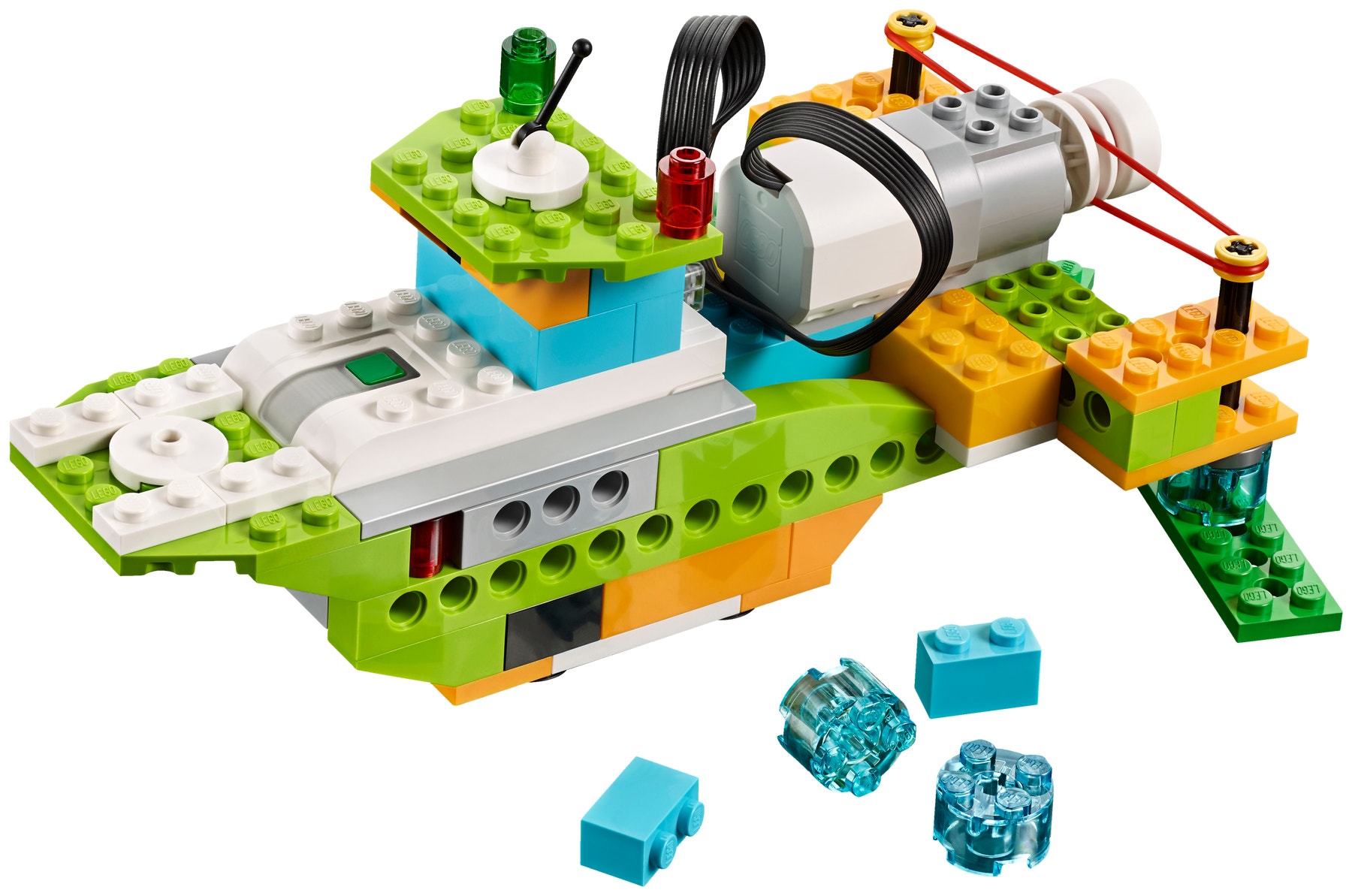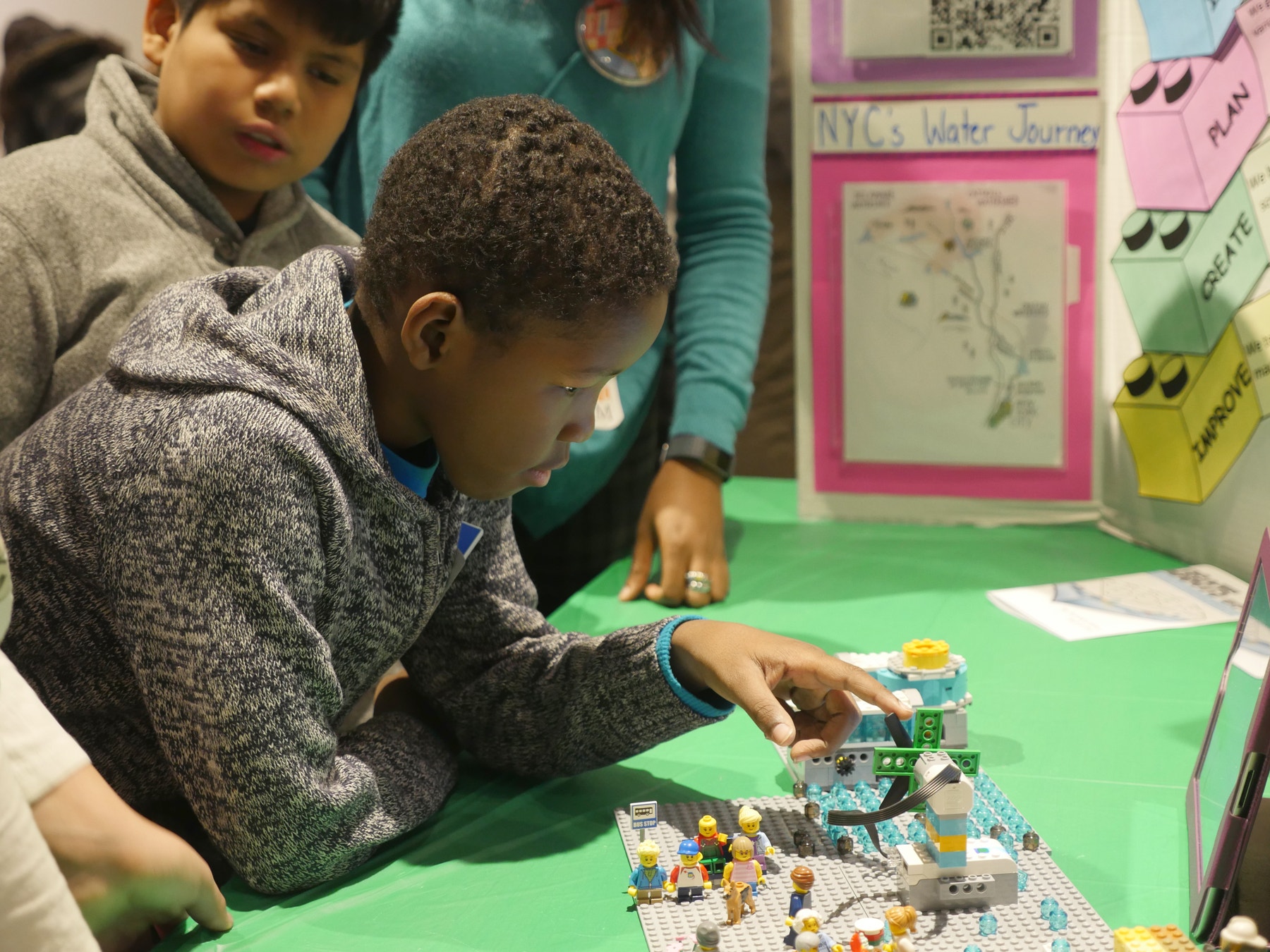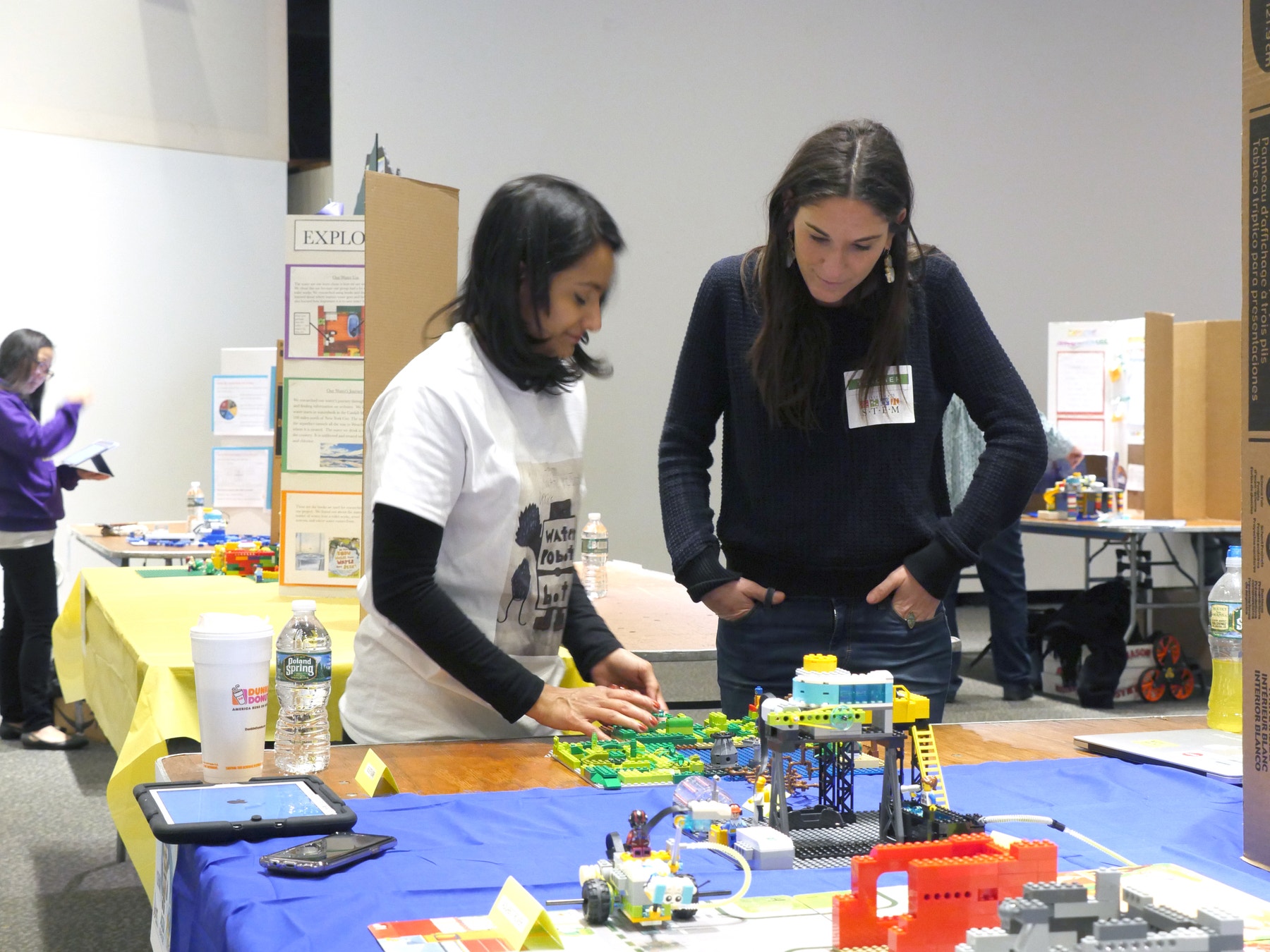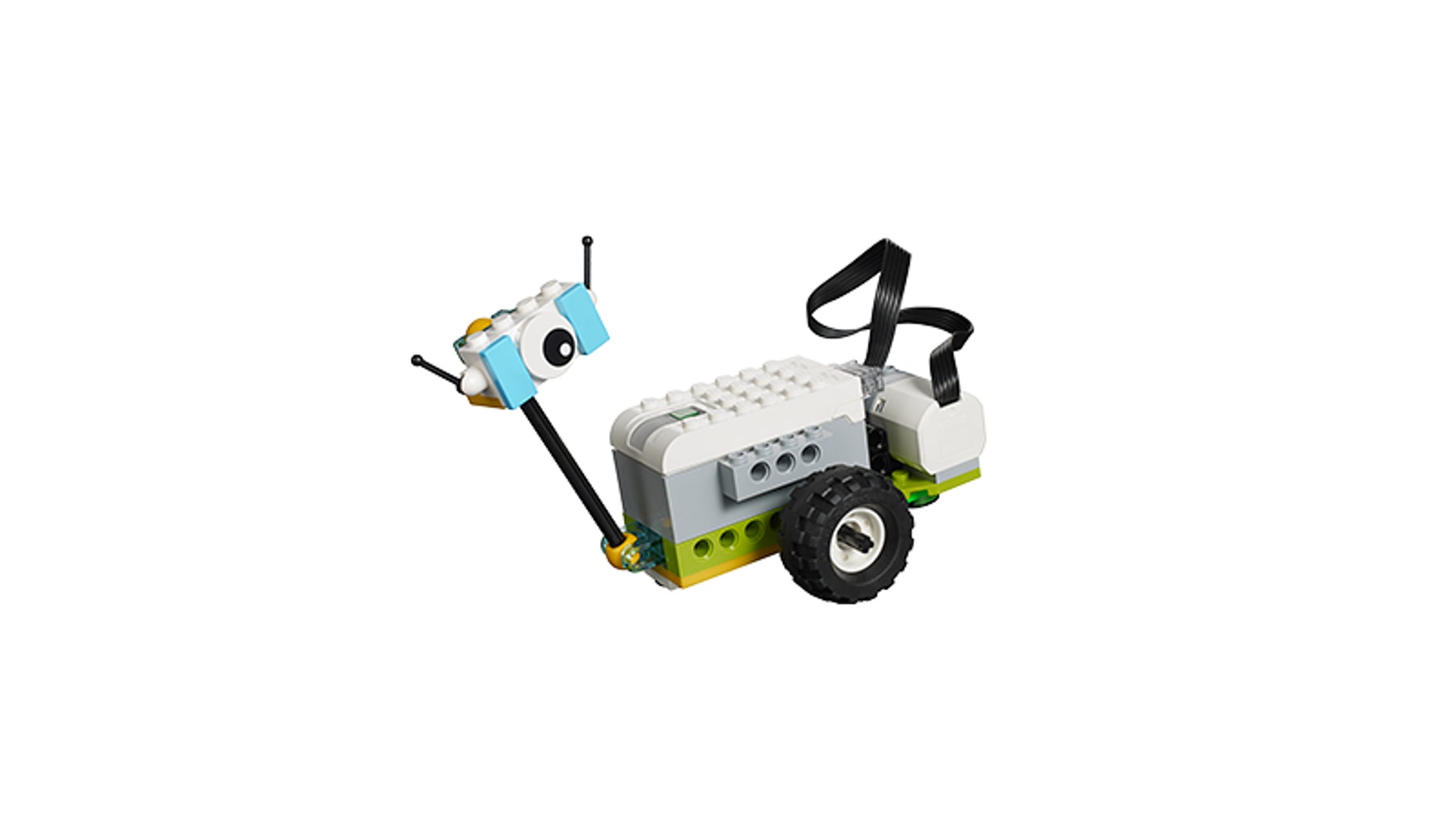In New York’s District 75, LEGO® Education is Bridging the Gap for All Types of Learners
New York’s District 75 is home to 61 schools serving more than 24,000 students, each one of them with disabilities severe enough to require an alternative learning environment. It’s a student population dealing with everything from emotional disturbances to serious cognitive or physical impairments. They hail from every borough, and represent cultural backgrounds as diverse as the city itself. And, according to the latest data from the New York Department of Education, 87% of students in the district come from economically disadvantaged homes. These students face challenges on every front, but they are not alone. They are supported by almost 3,500 passionate and committed educators. Teachers like Sean Arnold and Former District 75 Science Instructional Coach and current Assistant Principal at P37R on Staten Island, Denis Kogan who have each dedicated more than a decade to ensuring that these students have every opportunity to succeed. The challenge they face in looking for teaching strategies that can meet the needs of so many different types of learners is staggering. For their students traditional instruction can leave a gap between their ability to understand a concept and the ability to demonstrate that understanding. But both Arnold and Kogan have found a way to bridge that gap with LEGO® Education solutions.
“It’s the ease of use,” says Arnold, who is the technology coach for the District 75 STEM team. “The ability for them to take something from their head where they struggle with it, and making it a reality with such ease is a huge piece especially for my kind of student.” By fusing technology with a hands-on, project-based learning model Arnold’s students are developing 21st century skills like collaboration and communication. Those are also key components of the social and emotional skillset that’s so important, especially in a setting where more than 40% of students have been diagnosed with autism. “LEGO Education gives these kids a way in. And, once they’re in, they get really excited about all the ways they can problem solve and rebuild their world.”


New York’s District 75 is home to 61 schools serving more than 24,000 students, each one of them with disabilities severe enough to require an alternative learning environment. It’s a student population dealing with everything from emotional disturbances to serious cognitive or physical impairments. They hail from every borough, and represent cultural backgrounds as diverse as the city itself. And, according to the latest data from the New York Department of Education, 87% of students in the district come from economically disadvantaged homes. These students face challenges on every front, but they are not alone. They are supported by almost 3,500 passionate and committed educators. Teachers like Sean Arnold and Former District 75 Science Instructional Coach and current Assistant Principal at P37R on Staten Island, Denis Kogan who have each dedicated more than a decade to ensuring that these students have every opportunity to succeed. The challenge they face in looking for teaching strategies that can meet the needs of so many different types of learners is staggering. For their students traditional instruction can leave a gap between their ability to understand a concept and the ability to demonstrate that understanding. But both Arnold and Kogan have found a way to bridge that gap with LEGO® Education solutions.
“It’s the ease of use,” says Arnold, who is the technology coach for the District 75 STEM team. “The ability for them to take something from their head where they struggle with it, and making it a reality with such ease is a huge piece especially for my kind of student.” By fusing technology with a hands-on, project-based learning model Arnold’s students are developing 21st century skills like collaboration and communication. Those are also key components of the social and emotional skillset that’s so important, especially in a setting where more than 40% of students have been diagnosed with autism. “LEGO Education gives these kids a way in. And, once they’re in, they get really excited about all the ways they can problem solve and rebuild their world.”
“LEGO Education gives students the confidence to take intellectual risks.”
Denis Kogan
Assistant Principal at P37R on Staten Island, New York’s District 75
Kogan agrees, “LEGO Education gives students the confidence to take intellectual risks.” This is a difference maker for a population of students who are by nature very concrete thinkers. For them, tools like LEGO Education WeDo 2.0 are a medium for abstract thought. Creating an environment of exploration without fear of failure allows Kogan’s students to begin thinking about using these concrete elements (the bricks) in different ways. “This is how we push them to begin thinking about thinking, to meta-cognate, we create a space of high confidence and high risk taking.”
The District 75 students were so successful using WeDo 2.0 and LEGO® MINDSTORMS® Education EV3 that Arnold and Kogan both began looking for ways to expand the programs. They found a partner in FIRST® LEGO® League. “We asked if we could adapt their _FIRST_® LEGO® League Jr. competition specifically for special education students.” Says Kogan. FIRST® said yes and now District 75 hosts an annual internal competition at the Hall of Science in Queens. The district supplies the kits and the kids take on the same challenges and themes modified to meet their learning styles as the actual FIRST® LEGO® League competitors. “It’s really been amazing to watch these students verbalize, communicate, and connect,” says Arnold.
Flexing the FLL rules to meet these kids where they are, Kogan says many kids take their projects to the next level, “I even had a student, a nonverbal kid, that was so into it that he had his mom get him a cell phone so he could control the robot via Bluetooth!” he says.


Kogan agrees, “LEGO Education gives students the confidence to take intellectual risks.” This is a difference maker for a population of students who are by nature very concrete thinkers. For them, tools like LEGO Education WeDo 2.0 are a medium for abstract thought. Creating an environment of exploration without fear of failure allows Kogan’s students to begin thinking about using these concrete elements (the bricks) in different ways. “This is how we push them to begin thinking about thinking, to meta-cognate, we create a space of high confidence and high risk taking.”
The District 75 students were so successful using WeDo 2.0 and LEGO® MINDSTORMS® Education EV3 that Arnold and Kogan both began looking for ways to expand the programs. They found a partner in FIRST® LEGO® League. “We asked if we could adapt their _FIRST_® LEGO® League Jr. competition specifically for special education students.” Says Kogan. FIRST® said yes and now District 75 hosts an annual internal competition at the Hall of Science in Queens. The district supplies the kits and the kids take on the same challenges and themes modified to meet their learning styles as the actual FIRST® LEGO® League competitors. “It’s really been amazing to watch these students verbalize, communicate, and connect,” says Arnold.
Flexing the FLL rules to meet these kids where they are, Kogan says many kids take their projects to the next level, “I even had a student, a nonverbal kid, that was so into it that he had his mom get him a cell phone so he could control the robot via Bluetooth!” he says.
Struggles with language and communication are common in District 75 students. By teaming them they’re thrown into a scenario where they have to collaborate and communicate to succeed. Arnold remembers a past year where he had each student focus on one small build that fit within the competition theme. “They had fun doing it and they were excited and eager to share. You could see they had become more confident.” Their final project combined components from three or four of the individual builds. They realized that if they worked collectively they could create a more effective solution. “It really facilitated a vast improvement in communication. They were able to tell each other what they were working on and how it worked.” Arnold says by the end the kids were so excited they wanted to present to the superintendent and anyone else who would listen. It was a transformation for a group of students who in many other school situations are quiet and not eager to speak at all.
The real thrill for Arnold and Kogan is the next step, when students take the skills they’re learning and apply them to solve real world problems. “I think that’s one of the most important things LEGO Education does, it allows for that transference of skills.” Says Kogan. Arnold has seen it first-hand. One of his most withdrawn students became very invested in the coding and design aspect of the projects. To foster his enthusiasm, Arnold introduced him to some online LEGO design platforms. He began designing projects and enlisting his classmates to aide in the builds, collaborating with them almost as a foreman in the construction of his designs. The student even started to look at problems within his community and created a design for gardens at the school, that would help address issues of hunger in the city. “It was such a cool design that we reached out to city councils and we’ve started to procure funding to build the real thing,” says Arnold.


Struggles with language and communication are common in District 75 students. By teaming them they’re thrown into a scenario where they have to collaborate and communicate to succeed. Arnold remembers a past year where he had each student focus on one small build that fit within the competition theme. “They had fun doing it and they were excited and eager to share. You could see they had become more confident.” Their final project combined components from three or four of the individual builds. They realized that if they worked collectively they could create a more effective solution. “It really facilitated a vast improvement in communication. They were able to tell each other what they were working on and how it worked.” Arnold says by the end the kids were so excited they wanted to present to the superintendent and anyone else who would listen. It was a transformation for a group of students who in many other school situations are quiet and not eager to speak at all.
The real thrill for Arnold and Kogan is the next step, when students take the skills they’re learning and apply them to solve real world problems. “I think that’s one of the most important things LEGO Education does, it allows for that transference of skills.” Says Kogan. Arnold has seen it first-hand. One of his most withdrawn students became very invested in the coding and design aspect of the projects. To foster his enthusiasm, Arnold introduced him to some online LEGO design platforms. He began designing projects and enlisting his classmates to aide in the builds, collaborating with them almost as a foreman in the construction of his designs. The student even started to look at problems within his community and created a design for gardens at the school, that would help address issues of hunger in the city. “It was such a cool design that we reached out to city councils and we’ve started to procure funding to build the real thing,” says Arnold.
With these types of outcomes it’s obvious that for the students of District 75, a hands-on project based approach to learning combined with resources like LEGO® Education solutions is providing a pathway to success that’s easy to navigate for all types of learners. Kogan says it well, “There are many ways to learn and it can and should be fun. LEGO Education helps us address those multiple entry points so that students are excited, interested, and engaged for the whole class period.”
LEGO Education WeDo 2.0 helps you create "Aha!" moments for all types of learners.


LEGO Education WeDo 2.0 helps you create "Aha!" moments for all types of learners.




